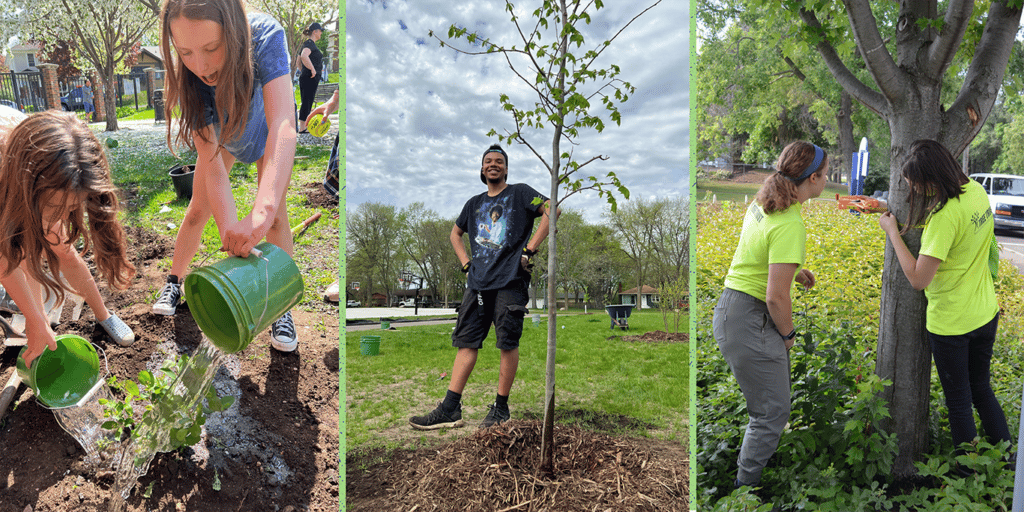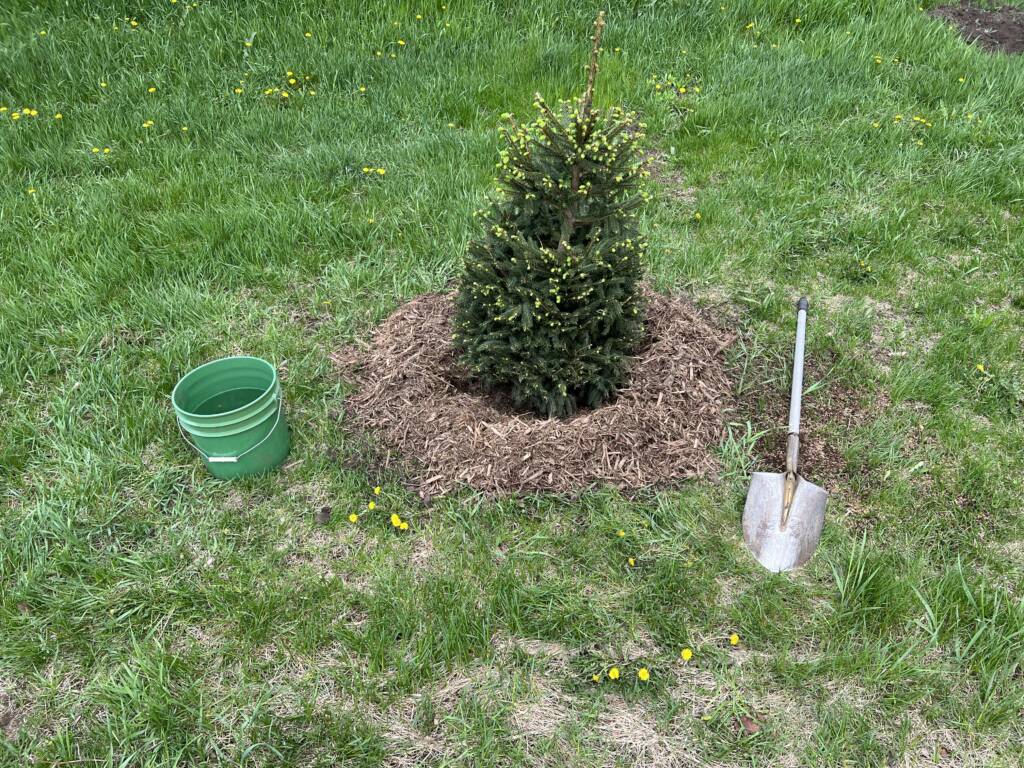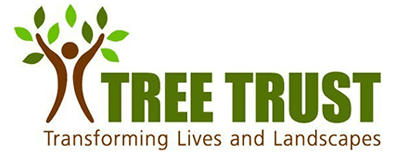
Urban Tree Care
Tree Trust cultivates our vision of a thriving workforce living on a healthy planet every season. In the summer, when the environment is not optimal for planting trees, Tree Trust switches focus to urban tree care. The Tree Trust Community Forestry team makes every effort to ensure that each tree we plant grows to maturity. Our team waters and cares for the Twin Cities urban forest, working with city municipalities to take tree inventories and document overall tree health. For the residents that helped add to Minnesota’s urban and suburban forest by planting trees at home, here are three aspects of tree care allowing you to become urban tree specialists in your own communities.
Application of Water: Growing Shade is Easy – Just Add Water
Just like all living things, trees need water to survive. Checking the soil around the base of your tree weekly is an effective way to see if it needs a drink. Take a pinch of soil from the base of your tree; if it is dry and crumbly, your tree is thirsty. Water your urban tree with one 5-gallon bucket of water or with a garden hose at a small trickle for one hour. You can also purchase a variety of tree watering bags at any local gardening store to do the work for you. Simply fill up the tree bag and it will water newly planted trees slowly. These water bags make caring for your tree as easy as turning on the garden hose.
Proper Tree Care: The Mulch Doughnut
Properly mulched trees are happy trees. Mulch helps retain water and keeps weeds down, which is important since weeds compete for nutrients. Mulch also helps to insulate the soil. Add woodchips to a depth of three inches on top of the planting circle. Keep the mulch at least three inches away from the trunk to prevent fungus from growing on the tree trunk. Your mulch circle should look like a doughnut surrounding the base of your tree. Mulch is your newly planted tree’s best friend. 
Tree Inventory: Yard Trees
Take a visual inventory of your tree’s overall health. Look for dead branches or signs of disease, like insects or unhealthy bark. Tree trimming is generally recommended for most trees during dormant season; however, there are a few exceptions. A dead branch, for example, or a tree damaged by a storm could become a safety hazard and should be removed. Tree Trust’s Landscape Services is happy to provide consultations with our team of expert arborists & certified tree workers on how to best tackle any potential tree woe. From removal of a hazardous tree to trimming dangerous tree branches, our Landscape Services skilled tree climbers adhere to the highest standards of tree care practices. To schedule a consultation, contact Tree Trust Landscape Services.
Urban trees live with many environmental factors that can cause stress. By paying attention to your tree, making sure it has enough to drink, and proper mulch, you can do your part to keep our collective tree canopy healthy and happy for generations to come.
If you do not have any trees to care for and want to help create a greener future, consider volunteering for our upcoming fall planting events. All are welcome! Sign up today!

